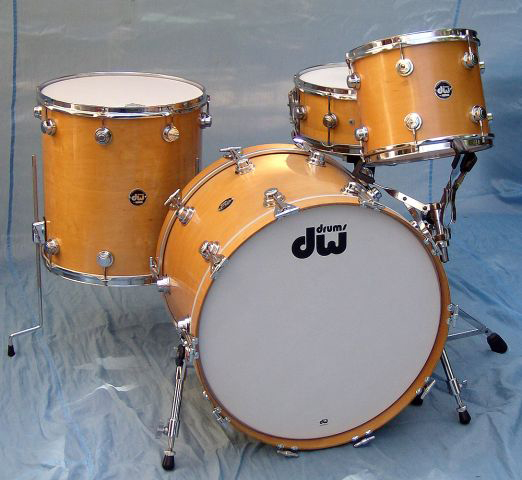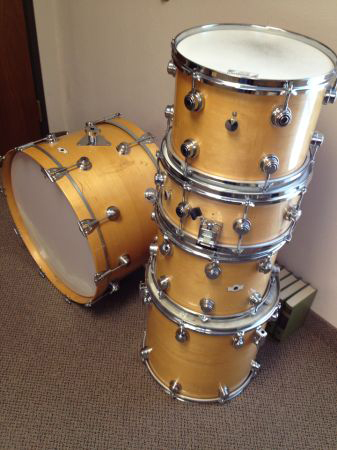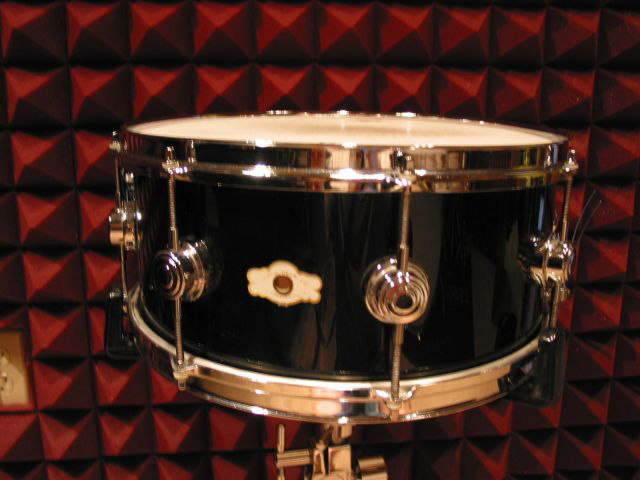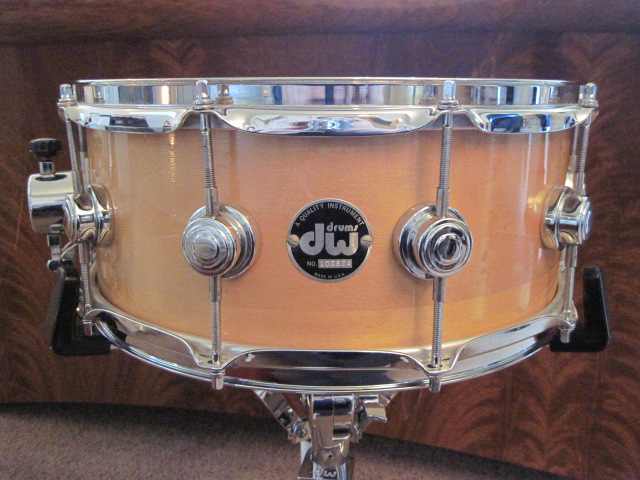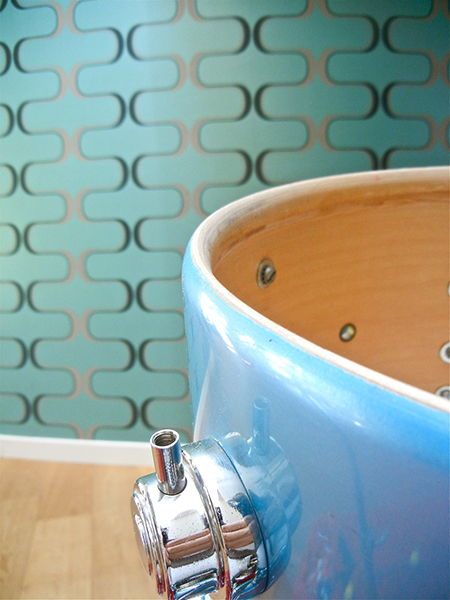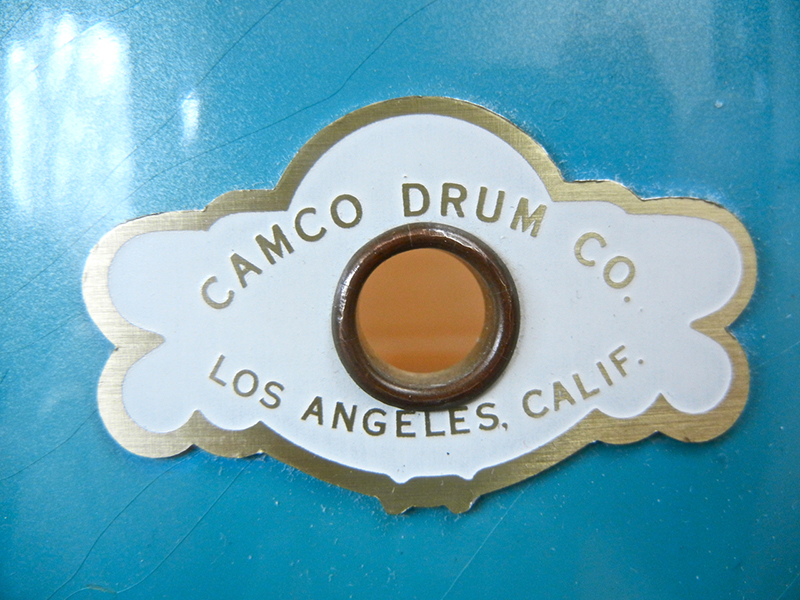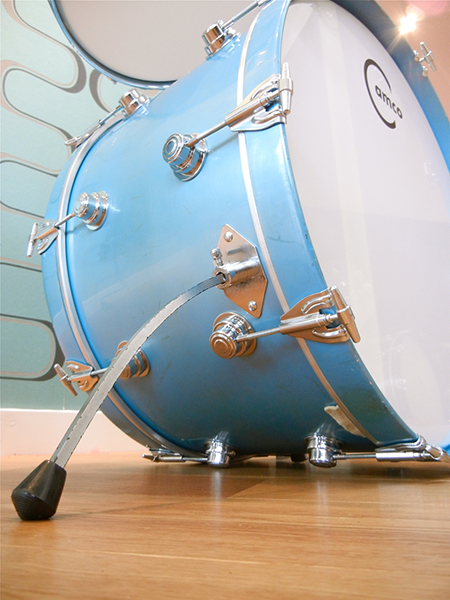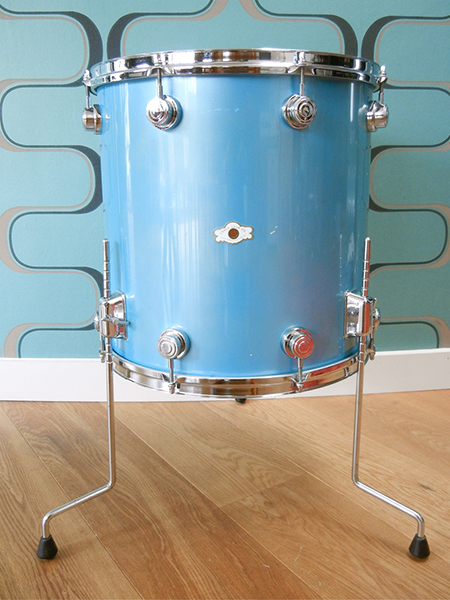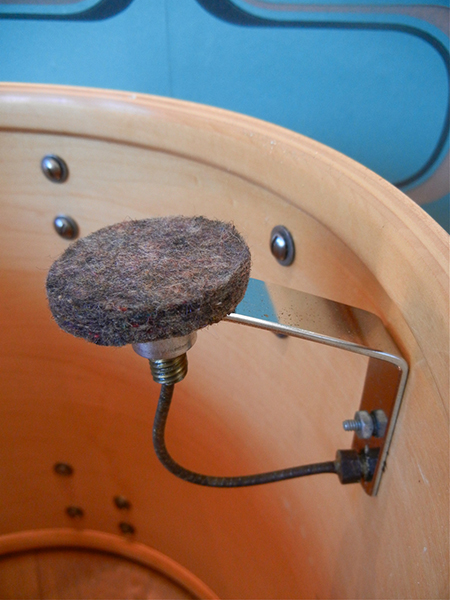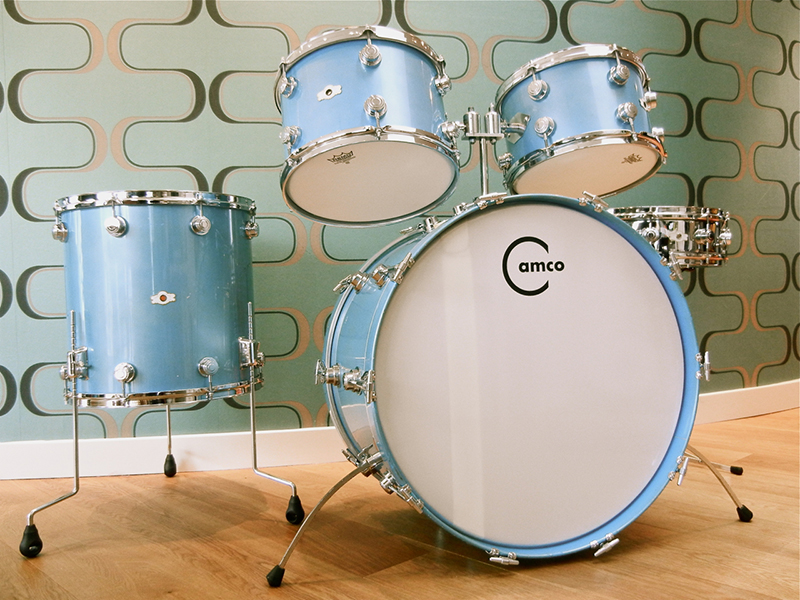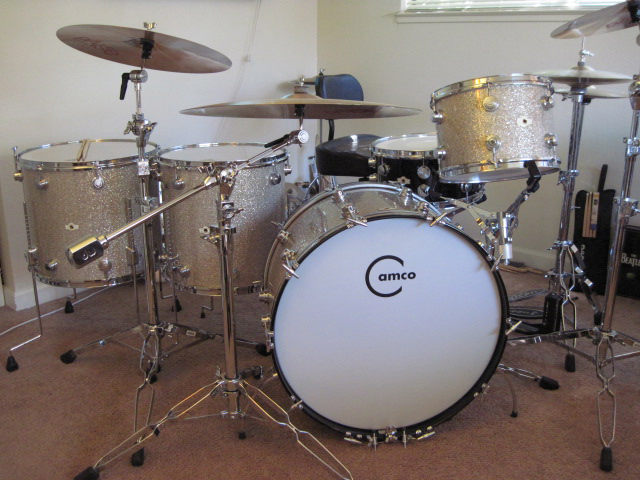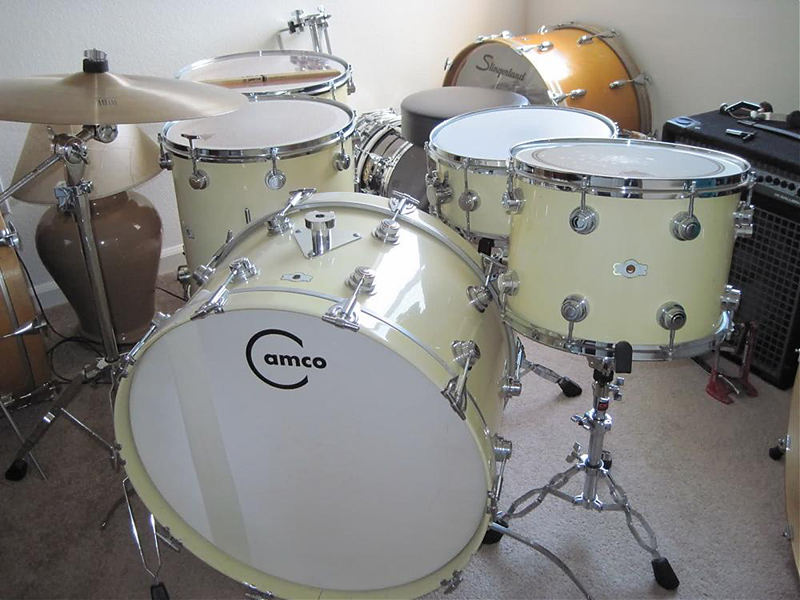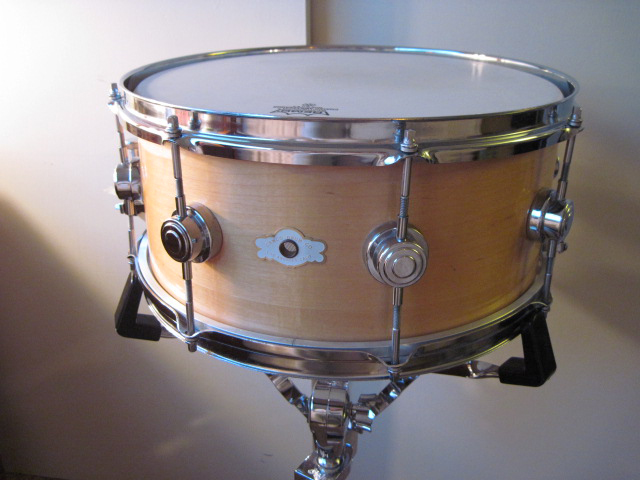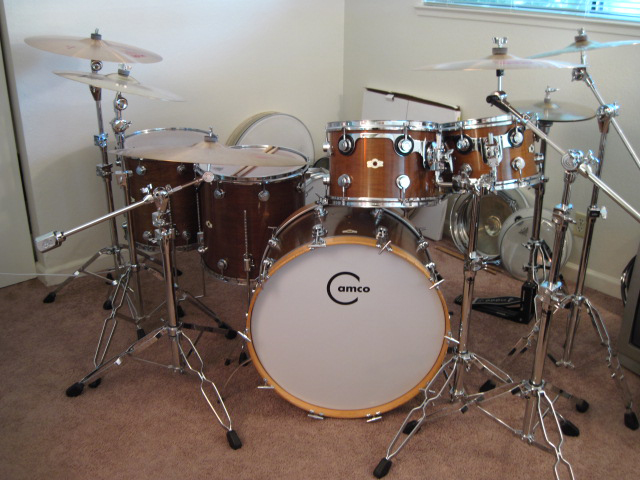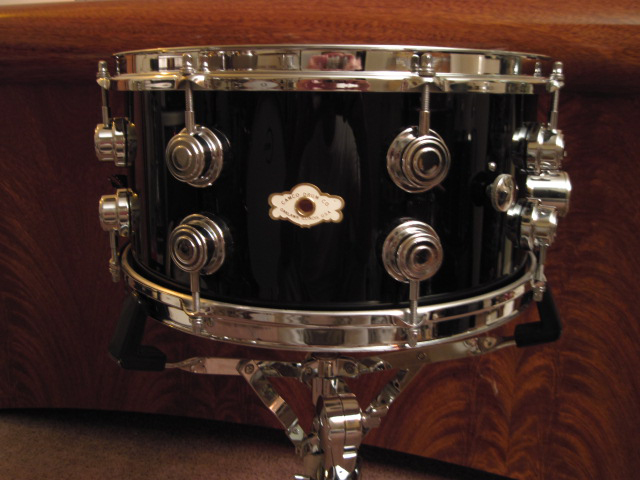Recently a “drums for sale” post popped up on my Facebook page listed on a drum sellers group. It included two 70s WMP Slingerland kits configured as a Buddy Rich kit
Read moreCamco: The L.A. Years and Beyond
Even though the L.A. era lasted but a few short years the impact was tremendous and they were the basis of the DW Collectors Series thin-shelled maple drums which have become famous worldwide. The Camco Keller years were from 1973 to 1977 and Camco had one of the top studio musicians as an endorser. Toto's Jeff Porcaro, who played on countless hit records and Grammy Award winning LPs, had a special made Hi Gloss Piano Black Lacquer Camco kit with all brass hardware. I think we all wanted one just like it in the 70s and at the time I had never heard of Camco as most didn’t, which was their greatest flaw.
Even today some of the worlds top rated drummers are playing vintage L.A. era kits. John Ferraro is another one that can be seen playing his Natural Maple L.A. era kit in the one-up, two-down ( 22,12,14,16 ) configuration on the Boz Scaggs DVD recorded live at the Great American Music Hall in San Francisco. “Runnin' Blue” and “Loan me a dime” are two songs where the Camco toms really stand out and those two songs along with others from that show can be seen on YouTube as well.
This isn’t some kind of cool fad about playing vintage drums, these musicians have been earning their livings with these L.A. era Camco drums for years.
The L.A. Keller shelled Camcos to many had the best sound available and made from the finest North American Hardrock Maple but they didn’t know how to market them...So they were eventually sold once again, and this time the Camco name went to Tama along with rights to the design of the shells. The owner of Drum Workshop, Don Lombardi (who elevated drum marketing to an art form), bought the rights to the hardware, all the plant drum machinery and the remaining inventory including the Keller shell stock and all the remaining drum hardware. How do I know the shell stock went to DW, and all the pre-made Camco designated shell tubes at Keller?
In the past it has been said that Tama got the Keller shells and used them on some of their 1st Camco drums. It’s also been rumored that the shell stock went to Ayotte up in Canada. Lots of rumors with no evidence to back them up... So where did the shells that Keller had pre-made go? Did they go to DW and were they used to make the 1st DW snare drums and drum sets? How could DW use all that Keller stock when Tama bought the rights and the design of the shells and bearing edges?
DW's 1st snare drums were 6x14” 6/6ply Keller maple and instead of being 14” in diameter they were 13 13/16”,the same diameter, same shell thickness, and the same number of plys as the 5” & 6.5x14” Camco maple snare drums BINGO! Was that it? Was it circumvention? Is that why the 1st DW snares and sets had all different bearing edges and different depths than the original Camcos but had the same diameters, the same number of plys, and the same shell thickness? The Depths were 16x22” & 16x24” and on the toms the depths were 10x12” and 11x13” with floor toms at 17x16” and 17x18” with only one size snare drum, a 6x14”...So did those brilliantly crafted Camco drums live on for a few years after the sale of the company? Well one thing is for certain, those shells didn't go to Tama or Ayotte and most won’t part with their early 80s DW Black Label drums (Pictured) which they were only making a dozen or so kits per year through 1984 and are by the way, yep you guessed it, undersized.
There have been quite a few articles written on Camco drums throughout the years with one that stands out. Robert Henrit Quote: ”Camcos have an absolute brilliant sound like real drums you might say, crisp and ballsy, yet still round, a bit like Gretsch but without their slightly woody sound, perhaps closer to Slingerland, only with a great deal of tone and volume.” The L.A. era Camcos were definitely made with power and projection in mind and that description was both excellent and accurate. Camco made some of the only maple toms that really don't need to be individually mic’d. The overheads are more than adequate usually, needing only a bass and a snare/hihat mic.
There have been comments on the Drum Forums about L.A. era Camcos, like “They actually scared my bandmates”, and “These are the drums your mother warned you about” and “Bad Ass with Class”. They truly should come with a warning...They sound like DW Maple Collectors Series on steroids. They are loud, and they are intense, and they resonate for days. They respond to the lightest touch and take on the personality of the heads installed almost Chameleon like.
The L.A. era had a few things that made them unique in relation to the other Camco eras. Other than the shell make up which was Keller instead of Jasper, and other than the shell thickness which all Camcos are the same thickness regardless of when made. It was the bearing edges that we had never seen before or since. They were steeple shaped with an ever so slight round over at the point or apex on the smaller toms with each drum size receiving the same bearing edges but as the shell size increased so did the round over. Each drum was a truly custom crafted instrument and unlike any that were being made at the time. We’ve seen a few examples of vertical maple plys being utilized on the 8x12” toms and only on the 12s. (Pictured) The bearing edges were a sight to see, they looked seriously labor intensive. They were hand-sanded, dove- feather-smooth, polished, then waxed. The interiors of the shells were also finely sanded then lacquered. If we put that amount of labor into drums today many wouldn’t be able to afford them.
Camco was the only drum company left in the 1970s that still made their hardware the best way, the old fashioned way, they machined it. They even went so far as to utilize aircraft grade aluminum internal lug hardware so the lug screws would never rust in damp climates marring the interiors and each lug screw hole was threaded. Threaded holes for the lug screws? Now that's attention to detail and labor intensive.
Camco did something else that most all of the other companies didn't do. They provided with each drum kit one of their top of the line Maple Snare Drums and not the metal snares that were cheaper to produce. Sized accordingly, with 20” and 22” bass drums getting the 5x14” and with the 24s, it was the model #452, a 6.5x14” of pure maple brilliance which some say is the best snare drum they have ever owned and the one they pick 1st for almost any gig. Others won’t take them out of the house, period!
I bought my Natural Maple L.A. era 6.5x14” from the original owner of C&C drums just last year and it took almost 3 years to find it. It’s a replacement for the one I sold to a studio musician in the UK. I so wanted to keep that AC White snare drum but couldn’t bring myself to break up that gorgeous vintage kit with all factory matched Alice Cooper White drums in the large rock/blues sizes.
Another one of the features the L.A. era had were the Alice Cooper Paint finishes which were a thick 3-layer automotive-grade paint with a primer base and a clear lacquer top coat. Those finishes were downright tough! They had only 4 choices, Black, White, Alice Copper Blue (Pictured) and Alice Cooper White. The Blue and White Alice Cooper colors closely resemble antique auto paint finishes and were elegant looking and now recently we see drum companies coming out with similar paint colors but not in multiple coats of auto-grade baked enamel. Now add all of these details up, including that irresistible clean, clear maple tone and the end result is almost obvious to the lucky few who own a set.
I think the L.A. Camcos could have been the finest drums America ever produced; the absolute pinnacle in the history of American made drum kits if they only would have had COB hoops and turned brass turret lugs. Paint finishes and stains, attention to detail, and artisan level craftsmanship utilizing the finest materials available created treasures from a bygone era. Treasures they are and were!
Camco: The Stradivarius of Vintage Drums
Camcos have been a cherished and well guarded secret by studio musicians for decades. To some it’s their modern clarity of tone and seemingly incessant resonance that sounds pre-eq’d. To others, it’s their ease of tuning and the ability to stay in tune which was built into the design, regardless of what era they were made in.
These brilliantly crafted drums with their thin, smaller than standard diameter shells and their machined hardware were the pinnacle of American made vintage drums. They are sought out today by some of the worlds first call recording artists, collectors and working musicians.
Some of the largest pro and vintage drum shops have waiting lists for vintage Camco kits.
A few weeks ago we saw recording artist and studio owner Jeramy Stacey with Benmont Tench (previously with Cheryl Crow) playing his C-650 Alice Cooper White L.A. era Camcos on the Jimmy Kimmel Live show. Drummers of that caliber could afford to play any drums made. That in itself says a lot.
That’s the attraction Camcos have. They are like owning a hand made Italian Sports Car rather than a Ford or a Chevy.. From the hand-sanded, polished, then sealed and waxed bearing edges, to the premium select aged maple shells that were threaded for each lug screw in the later years. The attention to detail and the amount of labor that went into these drums is mind bending and apparent as soon as you pick one up. The words are always the same... Oh Wow....
There were some that predicted their prices would exceed that of the Round Badge Era Gretsch kits from the 50s and 60s, and they were right. It’s not uncommon to see an original 4-pc. kit with a 20” or 22” bass drum selling for $6,500.00 and up, with 18” and 24” bass drum kits selling for quite a bit more than that.
During the Oaklawn, Ill. years (1961-1971) they made mostly 20” kits followed by 22s,18s, then 24s. We saw a switch between the 20” and 22” sized kits during the short but productive Chanute, Ks. era. (1971-73) again with the 18s and 24s bringing up the rear. The Jasper-shelled 24s are extremely rare. There have been only 4 Oaklawns and 2 Chanute era kits with 24” bass drums that have emerged that we know of. The current owners are all known and live all over the world including Canada and Belgium where only the L.A. era drums were ever distributed and sold. During the L.A. years, (1973-77) the trend again changed with 22” bass drums leading the way followed by 24s, 20s, and 18” bass drums.
Collectors look at this closely when appraising the value of vintage Camco drum kits. The C-650 is a favorite among the L.A. era players and artists. It came with a 14x24” BD, 9x13”, & 10x14” tom toms, 16x16”, & 16x18” floor toms with a matching 6.5x14” 6/6ply Keller Maple snare. Still today, the 6.5x14” model #452 is a highly sought after snare drum and a “Go To” snare for many recording artists.
Nick Mason of Pink Floyd just recently sold 2 of his most prized and recorded snare drums, the mid 70s Natural Maple L.A. Camco 6.5x14” model #453 which was the 10 lug option, and his early 80s Tama Bell Brass 6.5x14” to Footes Music Shop in the UK.
These 3,4, or 6-ply Jasper-shelled Oaklawns or 6-ply Keller-shelled L.A. era all have one thing in common, their owners swear by them and agree they are by far the best drums they have ever owned and the last kit they would ever sell. They are the type of drums one wants to take to the grave with them just in case there is a drum heaven.


